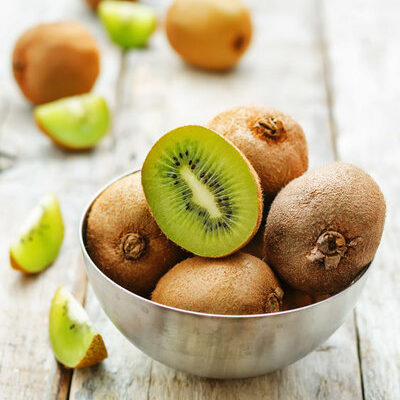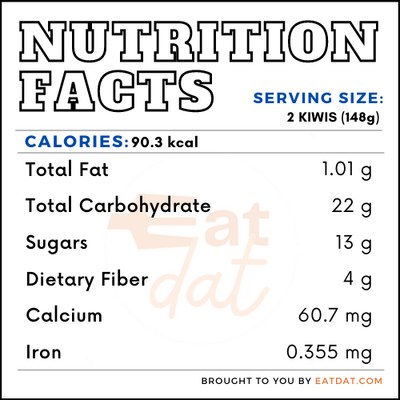
Kiwi
also known as Chinese Gooseberry, Yang Tao, Kiwifruit
What is a Kiwi?
Kiwi is a fruit that belongs to the berry species. It has a thin, brown, fuzzy skin and edible green flesh with dozens of minute seeds that are also edible.
Because of its origin in China, this fruit is also known as the Chinese gooseberry or yang tao. There are dozens of varieties of this fruit, which may be divided into hardy, fuzzy, and Arctic. The top 10 most popular varieties of kiwis are:
- Ananasnaya
- Dumbarton Oaks
- Geneva
- Issai
- Hayward
- Meander
- Saanichton 12
- Blake
- Tropical
- Arctic Beauty
Origin of kiwis
This is a fruit native to China, where it was mostly used for medicinal purposes. It was first taken to New Zealand in 1904 by Mary Isabel Fraser, principal of a girls’ school in the country. She gave it to a farmer, Alexander Allison, who first began cultivating it in Whanganui. It was only in the 1940s that the fruit began to be cultivated on a commercial basis for the first time in history. Today, it is considered New Zealand’s defining agricultural product and is the national fruit.
Nutrition
Kiwis are rich in vitamin C, which is essential for the proper functioning of the immune system and a host of other bodily functions. These functions include reducing fatigue, regulating metabolism, and ensuring good teeth, skin, gums, bones, blood vessels, and cartilage health through collagen formation. It is also essential for ensuring the bioavailability of iron, which is vital for keeping anemia at bay. Also, this fruit is rich in vitamin E, folate, potassium, and fiber. The fruit is high in bioactive compounds including a wide range of antioxidants, phytonutrients, and enzymes. However, they are known to be allergenic and may generate mild symptoms in some people.
Two kiwis (148g) contains the nutritional value of:

Commercial production
Kiwi production requires a mild and cool climate with low rainfall. This fruit grows well in rich and well-drained sandy loam soils with medium acidity. China is the largest producer of this fruit in the world, followed by New Zealand, Italy, Iran, Greece, Chile, Turkey, and France. 51 percent of the worldwide production is consumed by China. Other major consumers of the fruit are Italy, Iran, and Spain.
Unripe fruits can be left to ripen by leaving them in a brown paper bag with a banana or apple. The ethylene gas produced by these fruits will speed up the ripening. Ripe fruits can be stored in the refrigerator for up to a week.
Kiwi recipes
This fruit can be used to prepare a variety of dishes. Here are some popular recipes:
- Elderflower and Kiwi Pavlova
- Smoothies
- Kiwifruit Muffins
- Kiwifruit Bread
- Strawberry Kiwi Tartlet
- Kiwi Jam
- Phirni
- Kiwifruit Sorbet
- Kiwifruit Crumble
- Kiwifruit Mojito
FDA regulations
The FDA describes all fresh fruits, including kiwis, as raw agricultural commodities. The agency strictly regulates all aspects of their growing, harvesting, packing, and storage.
References
Kevin Lui, This Kiwifruit Isn’t From New Zealand at All. It’s Chinese, and This Is How It Got Hijacked, Time Magazine, https://time.com/4662293/kiwifruit-chinese-gooseberry-new-zealand-history-fruit/
Kiwi, National Horticulture Board, Ministry of Agriculture & Farmers’ Welfare, Government of India, http://nhb.gov.in/model-project-reports/Horticulture%20Crops/Kiwi/Kiwi1.htm
Richardson, David P et al. “The nutritional and health attributes of kiwifruit: a review.” European journal of nutrition vol. 57,8 (2018): 2659-2676. doi:10.1007/s00394-018-1627-z, https://www.ncbi.nlm.nih.gov/pmc/articles/PMC6267416/
Ma, Tingting et al. “Nutritional properties and biological activities of kiwifruit (Actinidia) and kiwifruit products under simulated gastrointestinal in vitro digestion.” Food & nutrition research vol. 63 10.29219/fnr.v63.1674. 8 Apr. 2019, doi:10.29219/fnr.v63.1674, https://www.ncbi.nlm.nih.gov/pmc/articles/PMC6458959/
